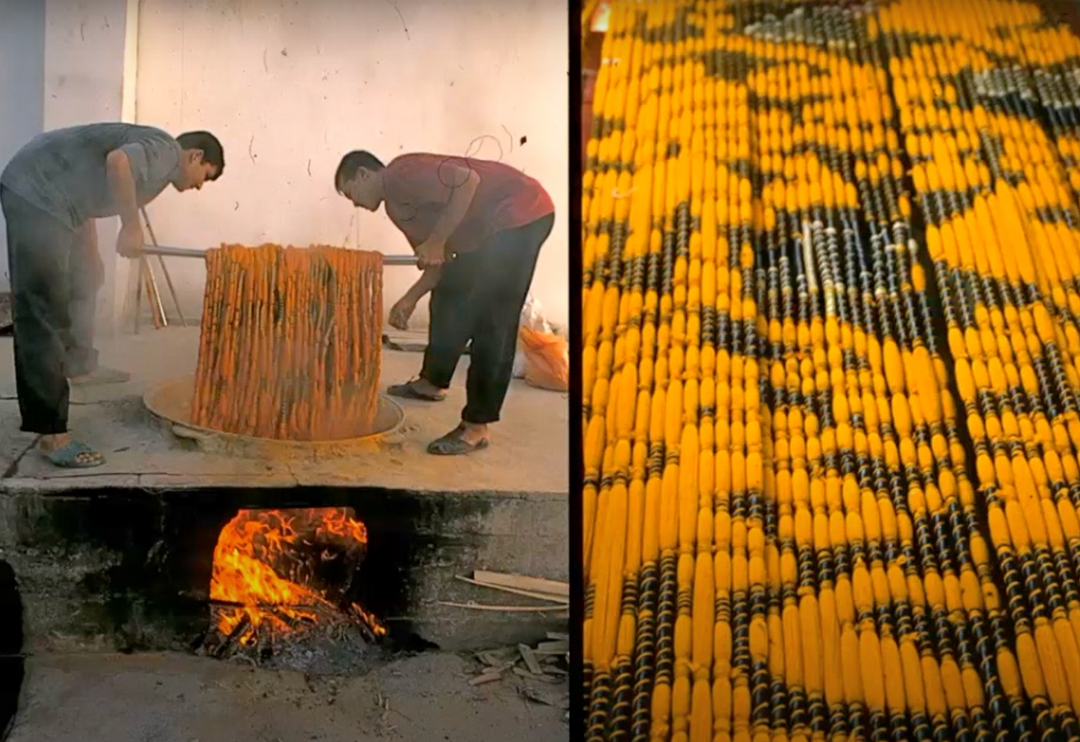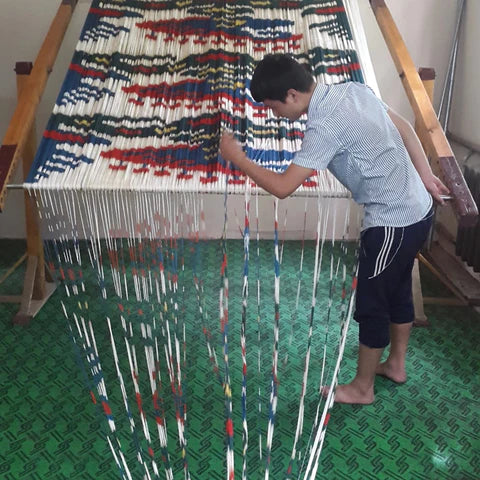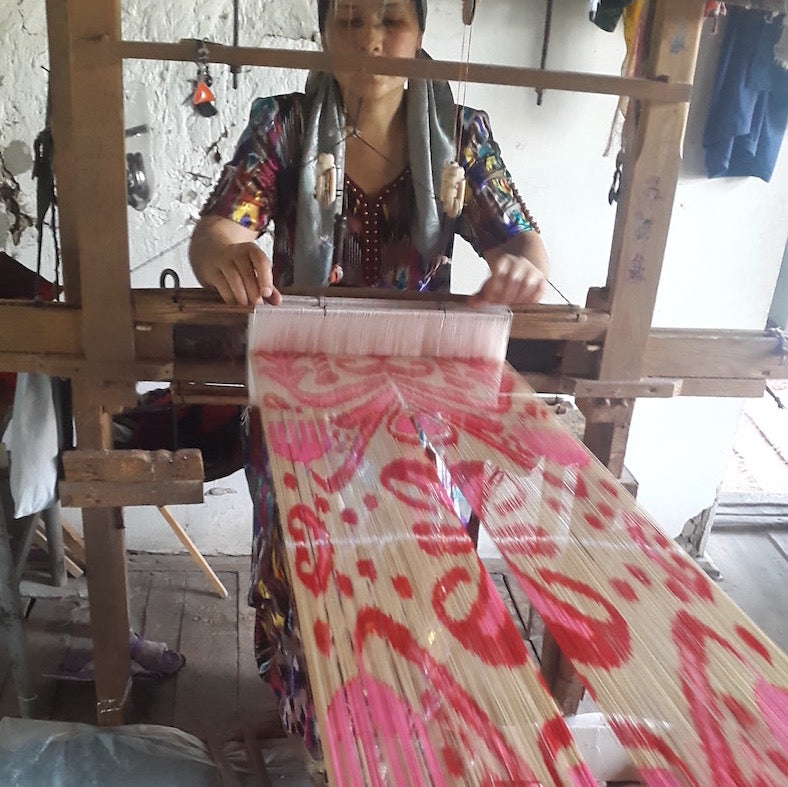Marikat - Uzbekistan
Marikat (formerly known as Crafts Studio IkatUz), located in Margilan, Uzbekistan (the Uzbek center of traditional ikat and silk weaving), is a cooperative of independent artists in the fields of ikat weaving, natural dyeing and block printing. Headed by Aziz Murtazaev, it unites more than 5 masters, 9 workers and 35 weavers, and serves as an open platform for creating opportunities for these masters to introduce their products in new regional and international markets. The main goals and tasks of the cooperative are to co-operate closely with each other for the benefit of preserving traditional craftsmanship and cultural values, and their development and transfer to the next generation.

In the Uzbek language, the textile term and technique that is commonly known as “ikat” is “abrbandi,” literally “to tie a cloud.” According to a classic Uzbek folktale, to prove himself worthy of a maiden, the first ikat artisan drew inspiration from seeing a rainbow reflected in a pool of water to dye and then weave a shimmering, patterned cloth. He impressed the father and won his love.

True ikat is a resist-dyeing technique. The patterning comes not from the complexities of woven structure, but from skillful dyeing. Before weaving, sections of the warp and/or weft threads are bound tightly with yarns that resist dyes. Since the dyes cannot penetrate, those areas retain the underlying color. Many parts of the world, including Indonesia, India, Persia, Mesoamerica and Japan, have strong Ikat traditions. Each practice exudes its particular culture and esthetics. Each produces masterworks of incredible finesse.
In Central Asia, exuberant, intricate motifs and a lively color palette of four to eight bold colors are prized. Here the warps, those threads stretched and tensioned on the loom, dominate the design. The wefts, the crossing threads, simply construct the cloth and play a minor role: they interlace in the simplest of weaves, plain weave or satin.



